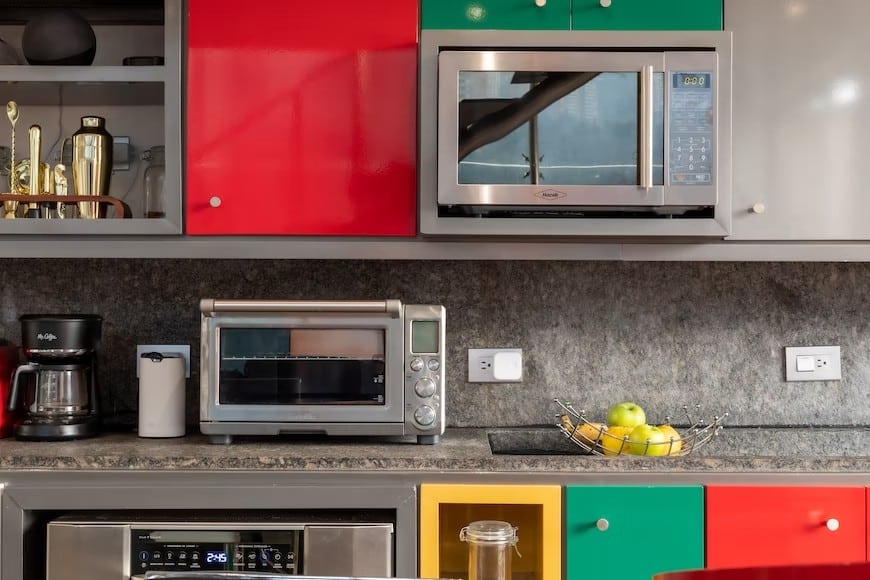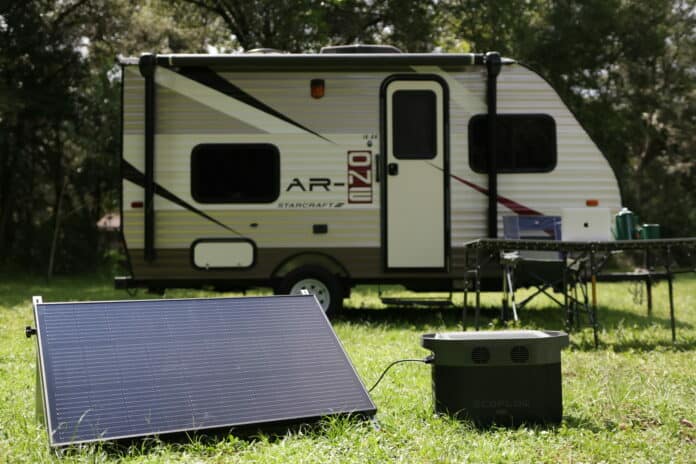Generators back up your home’s electricity supply and protect against power outages. They’re also great additions to any camping trip, outdoor barbeque, or beach day. A 2,000-watt generator is enough to power most small household items, including toaster ovens, coffee makers, lights, and computers. But is it enough power to run a dishwasher or freezer?
This article will help you determine what you can and can’t run off a 2,000-watt generator and how to supplement your backup energy supply to achieve energy resilience.
Starting Watts and Running Watts of a 2,000-Watt Generator
When it comes to household applications, electricity is measured in watts. A generator rated at 2000W indicates it can run appliances that require 2000W of continuous power or more if you’re measuring the surge power. You can determine the power output capabilities of your generator by determining the difference between the generator’s running watts and starting watts.
Running Watts
Running watts, also called rated or continuous watts, are the amount of power a generator can continuously produce over a long period. The generator’s output capacity typically indicates its running watts.
To avoid an overload — which happens if you exceed a generator’s running wattage limitations — make sure the sum total wattage of any devices or appliances plugged into the generator and switched on doesn’t exceed its running watts rating. Many generators have overload protection, but it’s better not to trigger this.
Starting Watts
A generator’s starting watts, sometimes referred to as surge watts or surge power, is the maximum amount of electricity in a short burst. In other words, a generator can exceed its running watts rating but can only sustain this higher electrical output for a few seconds.
Surge power allows the generator to handle the higher wattage requirements some motor-driven appliances — such as air conditioners and refrigerators — have when they first start up. The surge wattage capacity is always higher than a generator’s running watts.
For example, take the EcoFlow DELTA Max, which has a 2016W capacity. The generator’s capacity indicates the running watt rating, but its surge power rating is higher—between 2800W to 3400W AC output with X-Boost mode. In simple terms, the DELTA Max can provide a little over 2000 watts continuously but can accommodate up to 3400 watts of power to start up large appliances if required.
Determining Your Wattage Requirements
Before using a generator, you will want to determine how much power you need.
- Identify the wattage requirements of your appliances. Survey the starting and running wattage requirements of the appliances and devices you plan to plug into the generator. You can usually find the wattage requirements labelled on the appliance, but we’ve also compiled the starting and running watts of typical household appliances in the table below.
- Convert volts/amps to watts. If your appliance’s power requirements are in volts or amps, you can calculate an appliance’s running watts with this equation:
Volts (V) x Amps (A) = Watts (W)
- Count the running watts of your appliances. Add up the running watts of the appliances you plan to use — does the total exceed the running watts listed on your generator? If so, you should consider buying a generator with more output capacity.
- Factor in starting watt requirements. Identify the appliance with the highest starting wattage. Add that appliance’s starting wattage to the running wattage total.
- Calculate the sum. That final number is the total starting watts you need from your generator. As discussed above, to avoid overloading your generator, do not exceed its starting watts rating.
Starting and Running Watts of Typical Household Appliances
| Appliance | Rated (Running) Watts | Starting Watts |
| Dishwasher | 1300 | 1800 |
| Washing Machine | 1200 | 2300 |
| Refrigerator/Freezer | 700 | 2200 |
| Light Bulb | 60-75 | 0 |
| Microwave | 600-1000 | 0 |
| TV | 500 | 0 |
| Toaster | 900 | 0 |
| Vacuum | 1440 | 2500 |
| Coffee Maker | 1000 | 0 |
| Blender | 300 | 800 |
| Clothing Iron | 1500 | 0 |
| Dryer | 5400 | 7000 |
| Toaster Oven | 1200 | 0 |
| Curling Iron | 1500 | 0 |
| Space Heater | 2000 | 0 |
| Laptop | 50-300 | 0 |
| 20” Box Fan | 200 | 350 |
Improving Energy Resilience
As mentioned above, most large appliances require more than 2,000W. A 2000W generator is not ideal for homeowners looking to back up the electricity supply of a whole house. However, there are ways to make your home more energy resilient.
If your generator doesn’t provide enough storage to power all your necessary appliances and devices, consider supplementing your generator with an extra backup battery such as the DELTA Max Smart Extra Battery. Note that an extra battery increases storage capacity but doesn’t increase output. You’ll need to purchase a bigger generator if you need a higher output wattage.
Solar panels also boost the resilience of your home’s power supply. EcoFlow Rigid Solar Panels provide an alternative electricity generation source to protect against grid power outages. For renters or homeowners who can’t install solar, consider pairing a portable power station, such as the EcoFlow DELTA Max, with portable solar panels to create a portable solar generator.

Another excellent way to secure energy resilience is to create a system with multiple power backup options. Besides solar, for example, you can incorporate dual-fuel generators like the EcoFlow Smart Generator (Dual Fuel), which has a (petrol) running watt rating of 1800W and a peak wattage of 1900W.
With multiple backup options, you’ll be ready for any possibility, whether a grid failure, natural disaster, or transition to off-grid living.

Frequently Asked Questions
A 2,000-watt generator can run most appliances you need during a power outage, but some devices require too much power. These include an electric clothes dryer, electric cooking range, and electric water heater, all with a running watts requirement between 3,000 watts and 5,500 watts.
Most houses require significantly more than 2000 watts of electricity to run at total capacity. Unless you’re powering a tiny home or motorhome, you won’t be able to run all the electrical appliances you would use on a typical day with a 2,000-watt generator.

Final Thoughts
A 2,000-watt generator is a good investment for those who desire a basic backup power setup. Most basic kitchen and home appliances can run off this size generator, including lights, fans, cooking gadgets, and some TVs. Homeowners who want a backup electrical system for essential appliances and personal devices can consider the EcoFlow DELTA Max. With 2016W, it’s an excellent and affordable solution for a more energy-resilient home.
